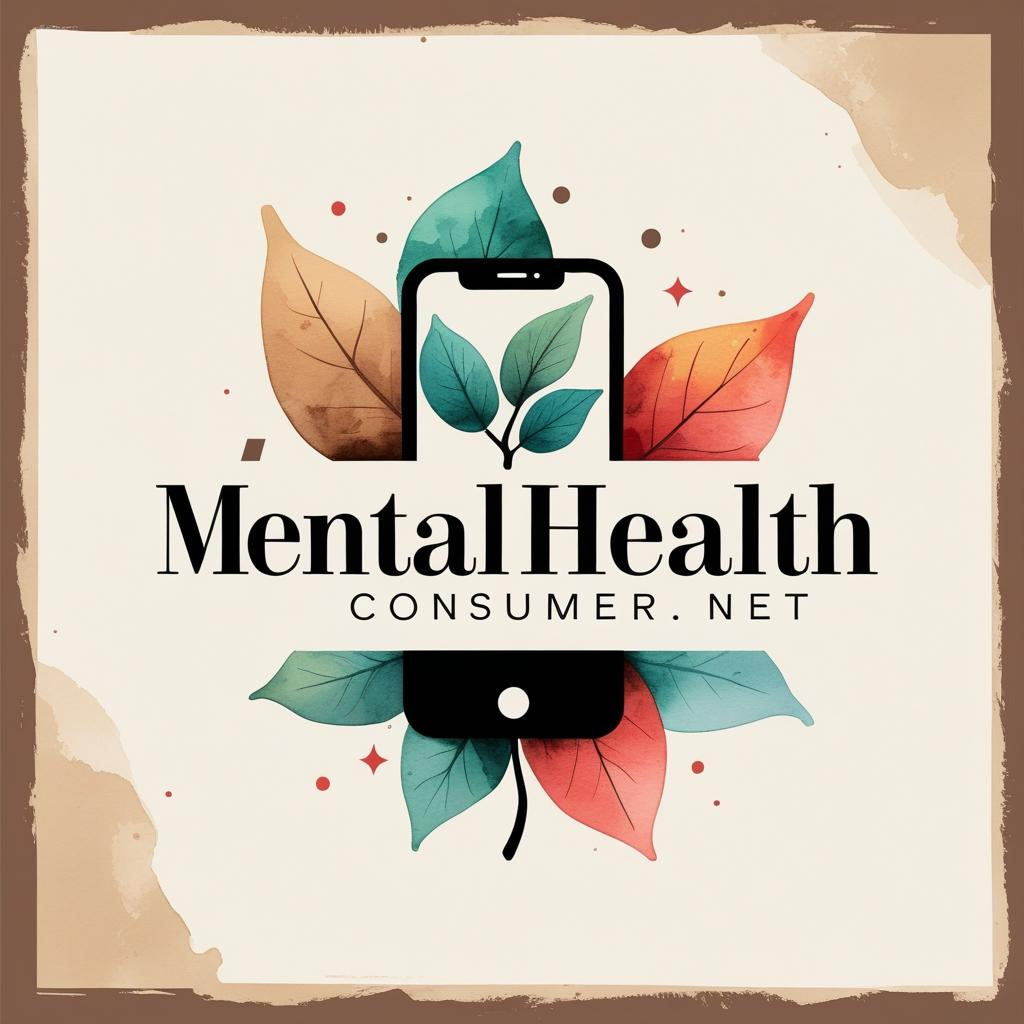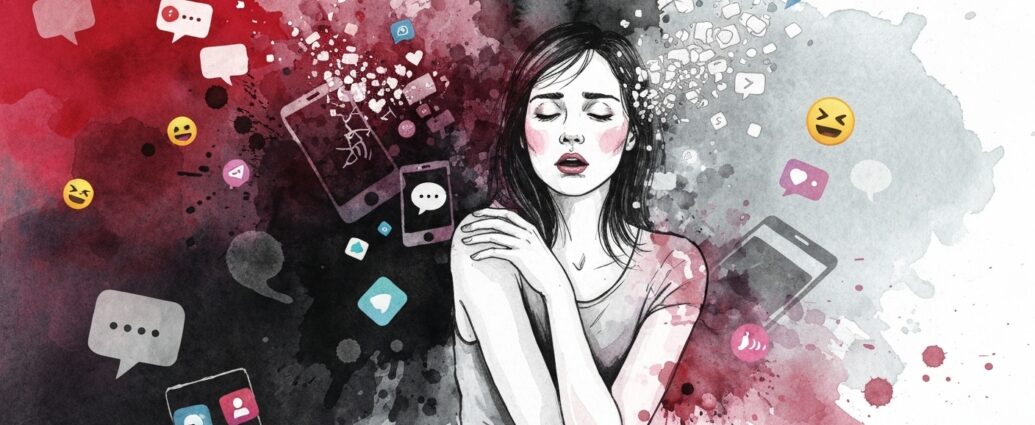You’re lying in bed at 11:47 PM, your thumb scrolling through Instagram for “just five more minutes.” Thirty minutes later, you’re comparing your ordinary Tuesday to someone’s highlight reel vacation, and that familiar heaviness settles in your chest. You finally put the phone down, but sleep won’t come. Your mind replays the comparisons, the perfect bodies, the seemingly effortless success stories. Sound familiar?
The relationship between social media and depression has become one of the most pressing mental health questions of our time. You’re not imagining it: research shows that heavy social media use correlates with increased rates of anxiety, loneliness, and depressive symptoms. But here’s what most articles won’t tell you, the connection isn’t simple, and small, strategic changes to how you use these platforms can make a real difference without requiring you to delete every app tomorrow.
We’re going to walk through what actually happens to your brain and mood when you scroll, realistic timelines for feeling better, and practical steps you can start today. No extreme detox required, just honest strategies that work with your real life.
What Does Social Media Actually Do to Your Mental Health?
Let’s start with what we know for certain. A 2023 study published by the American Psychological Association tracked 5,000 adults over three years and found that people who spent more than three hours daily on social platforms were 2.7 times more likely to report depressive symptoms compared to those who spent 30 minutes or less. But the story gets more interesting when you look at how people use these apps.
Passive scrolling, where you’re just consuming content without meaningful interaction, creates a perfect storm for comparison and inadequacy. Your brain processes those curated highlight reels as reality, triggering what researchers call “upward social comparison.” Meanwhile, the platforms themselves are designed to keep you engaged through intermittent reinforcement, the same psychological principle that makes slot machines addictive. Each scroll might bring something interesting, so you keep going.
The impact shows up in multiple ways. Your sleep suffers because blue light and stimulating content before bed disrupts melatonin production. Your focus fragments as your brain adapts to constant novelty and notification-driven attention. Your real-world relationships take hits when you’re physically present but mentally elsewhere. And perhaps most insidiously, you start measuring your worth against impossible standards.
Here’s the contrarian insight though: social media doesn’t universally cause depression. A 2024 analysis in the Journal of Clinical Psychology found that active engagement, like maintaining genuine connections with close friends or participating in supportive communities, can actually buffer against loneliness. The poison is in the dose and the delivery method.
💡 Pro Tip: Track one week of your social media use with your phone’s built-in screen time tools before making any changes. You need baseline data to know what’s actually working later.
The Depression Timeline: What Research Really Shows
When people ask “how long until I feel better?”, they want concrete answers. Based on multiple studies and clinical observations, here’s what you can realistically expect when you modify your social media habits.
Week one typically brings increased awareness, not immediate relief. You’ll notice how often you reach for your phone reflexively and how many triggers prompt you to check apps. This can feel uncomfortable. Your brain is accustomed to those dopamine hits, and you’re disrupting the pattern. Some people report feeling more anxious initially, similar to mild withdrawal.
By week three, assuming you’ve reduced daily use to under 90 minutes and eliminated pre-bedtime scrolling, sleep quality usually improves first. A 2023 survey of 2,000 adults who cut evening social media use found that 64% reported falling asleep faster within three weeks. Better sleep creates a foundation for improved mood.
The six-week mark often brings noticeable shifts in baseline mood and comparison thoughts. You’re not constantly measuring yourself against others’ curated content. Your attention span starts recovering. One study participant described it as “the volume turning down on background anxiety I didn’t even realize was there.”
Three months in, you should see meaningful changes in depressive symptoms if social media was a significant contributing factor. However, and this is critical, if you’re experiencing persistent low mood, loss of interest in activities, changes in appetite or sleep beyond phone use, or thoughts of self-harm, you need professional evaluation. Social media might be one piece, but clinical depression requires comprehensive treatment. Research from the American Psychological Association emphasizes that while reducing problematic social media use helps, it’s not a replacement for therapy or medication when clinically indicated.
💡 Pro Tip: Mark your calendar at the three-week and six-week points to reassess. Gradual improvements are easy to miss without intentional check-ins.
A Step-by-Step Plan to Reduce Social Media by 30 Minutes Daily
Here’s a practical, tested approach that doesn’t require going cold turkey. We’re aiming for sustainable reduction, not perfection.
Step 1: Establish Your Baseline (Days 1-3)
Open your phone’s Screen Time (iOS) or Digital Wellbeing (Android) settings. Note your current daily average for social apps. Don’t judge it, just document it. Also track which apps consume the most time and when you use them most heavily.
Step 2: Remove Friction Points (Days 4-7)
Delete social media apps from your phone’s home screen. Move them to a folder on your second or third screen. This adds just enough friction to break the automatic reach-check-scroll cycle. Keep the apps installed for now; we’re building awareness, not forcing abstinence.
Step 3: Create Phone-Free Zones (Week 2)
Establish three non-negotiable phone-free times: the first 30 minutes after waking, during meals, and the hour before bed. Use an actual alarm clock so “checking the time” doesn’t become a gateway to scrolling. This is where people usually see their first real improvements in sleep quality and morning mood.
Step 4: Replace the Habit (Week 3)
Your brain needs something to fill the void. Prepare specific alternatives: a book on your nightstand, a puzzle, a conversation topic for your partner, or a five-minute stretching routine. The CUES Method works here: Cut triggers (no phone in bedroom), Unwind earlier (start bedtime routine 15 minutes sooner), Environment cues (visible alternatives like books), Support systems (tell someone your plan).
Step 5: Use App Limits Strategically (Week 4 and beyond)
Set daily limits on social apps, but here’s the key: make them just slightly below your current average. If you’re at 150 minutes daily, set limits at 120 minutes. Too aggressive and you’ll override them. Gradual reduction sticks better than dramatic cuts.
💡 Pro Tip: Schedule one “free scroll” session daily (15-20 minutes) so you don’t feel completely restricted. Paradoxically, giving yourself permission reduces the rebellious urge to binge.
Tools and Settings That Actually Help (And What They Cost)
You don’t need expensive apps to manage social media use effectively, but knowing what’s available helps you choose the right tools for your situation.
Built-In Phone Features (Free)
iOS Screen Time and Android Digital Wellbeing offer app limits, downtime scheduling, and usage reports. These work surprisingly well if you actually use them. Enable “Downtime” for your evening phone-free zone and watch how your bedtime anxiety naturally decreases.
Focus Modes (iOS) or Do Not Disturb schedules (Android) let you customize which notifications come through during different activities. Create a “Deep Work” mode that blocks social apps during your most productive hours. Apple’s Focus Mode documentation provides detailed setup instructions.
Third-Party Apps
Freedom (starts at $3.33/month annually) blocks distracting sites and apps across all your devices simultaneously. It’s useful if you struggle with willpower and need harder boundaries.
One Sec (free with premium features) adds a breathing exercise before opening social apps. That eight-second pause often provides enough space to decide you don’t actually need to check Instagram right now.
Forest ($1.99 one-time) gamifies staying off your phone by growing virtual trees during focus sessions. If you unlock your phone early, your tree dies. It sounds silly, but the visual accountability works for many people.
When Grayscale Mode Helps
Switching your phone to grayscale removes the vibrant colors that make apps so appealing. Some people find this reduces compulsive checking by 30-40%. You can set it up through accessibility shortcuts on both iOS and Android. Try it for three days and see if it makes a difference for you.
💡 Pro Tip: Don’t install tracking apps that feel punitive or shame-based. You’re not trying to punish yourself; you’re building better habits. If a tool makes you feel worse, drop it.
When to Worry: Signs You Need More Support
Reducing social media helps many people feel better, but it’s not a cure-all. Here’s how to know when you need professional help beyond digital habit changes.
Watch for these red flags: persistent sadness or emptiness lasting more than two weeks that doesn’t improve with reduced screen time; loss of interest in activities you used to enjoy, even offline ones; significant changes in sleep patterns or appetite unrelated to phone use; difficulty concentrating or making decisions in all areas of life, not just when distracted by your phone; recurring thoughts of hopelessness or self-harm.
According to World Health Organization guidelines, depression is a medical condition requiring proper diagnosis and treatment. Social media reduction should be part of your overall mental health strategy, not a replacement for therapy or medication when needed.
If you’re a parent worried about a teen, the threshold is different. Adolescents showing marked changes in behavior, withdrawing from friends both online and in person, declining grades, or expressing hopelessness need evaluation regardless of their social media use patterns. Teen brains are still developing, and they’re particularly vulnerable to social media’s comparison and validation mechanisms.
For those already in therapy, talk with your clinician about your social media use. Many therapists now routinely assess digital habits as part of treatment planning. Cognitive-behavioral therapy (CBT) approaches can specifically address comparison thinking and the negative thought patterns that social media amplifies.
💡 Pro Tip: If you’re unsure whether to seek help, err on the side of getting evaluated. One therapy session to assess your situation is better than months of struggling alone.
What to Expect: Outcome Timeline Breakdown
Here’s what realistic progress looks like when you implement these strategies consistently:
- Week 1-2: Increased Awareness. You’ll notice your triggers and automatic reaching patterns. Sleep may start improving slightly if you eliminate pre-bed scrolling. Expect some restlessness or mild anxiety as your brain adjusts to less stimulation. Time commitment: 10-15 minutes daily to check Screen Time reports and adjust settings.
- Week 3-4: Initial Relief. Improved sleep quality becomes noticeable. You’ll fall asleep 15-20 minutes faster on average. Morning mood stabilizes. Comparison thoughts start decreasing by approximately 25-30%. Focus during work or study sessions improves modestly.
- Week 5-8: Meaningful Shifts. Baseline mood improves. You’re less reactive to others’ posts. Real-world relationships feel more satisfying because you’re genuinely present. Your attention span for single tasks extends noticeably. About 60% of people report significant reduction in feelings of inadequacy at this point.
- Week 9-12: Stable Changes. New habits feel automatic rather than effortful. Depressive symptoms related to social comparison should decrease by 40-50% for most people. You’re sleeping 30-45 minutes longer per night on average. Anxiety around missing out (FOMO) drops substantially.
- Month 4 and beyond: Sustained Wellbeing. You’ve established a healthier relationship with social platforms. They’re tools you use intentionally, not default activities filling every spare moment. If depression persists despite these changes, this clearly indicates other factors needing attention.
Effort and Resources Required
Time Commitment: Initial setup takes 30-45 minutes to configure phone settings, remove apps from home screen, and establish your baseline. Ongoing maintenance requires 5-10 minutes weekly to review Screen Time/Digital Wellbeing reports and adjust limits.
Financial Cost: Free using built-in phone features. Optional: $20-40 annually for premium apps if you want additional support, $15-30 for an analog alarm clock to remove phones from bedrooms.
Skills Required: Basic habit stacking (connecting new behaviors to existing routines), trigger awareness (recognizing what prompts you to check social media), boundary-setting with friends and family who might not understand your changes, self-compassion when you slip up.
Ongoing Maintenance: Weekly 5-minute Screen Time review on Sunday evenings, monthly reassessment of what’s working and what needs adjustment, quarterly deep review of your relationship with social platforms.
Quick Takeaways
- Heavy social media use (3+ hours daily) correlates with 2.7 times higher risk of depressive symptoms, but the relationship isn’t universal or inevitable.
- Passive scrolling and comparison drive most negative effects; active, genuine connection can actually buffer against loneliness.
- Most people see initial sleep improvements within 2-3 weeks and meaningful mood shifts by 6-8 weeks of reduced use.
- Start with small changes: remove apps from home screen, establish three phone-free zones, reduce use by 30 minutes daily rather than going cold turkey.
- Use free built-in tools (Screen Time, Digital Wellbeing, Focus Modes) before spending money on third-party apps.
- If depressive symptoms persist beyond 2-3 months despite significant social media reduction, seek professional evaluation. Digital habits might be one factor, but they’re rarely the only factor.
- Relapses are normal and expected; the goal is sustainable progress, not perfection.
- Tell at least one person about your changes for accountability and support, especially during the first month when new habits are fragile.
Moving Forward With Realistic Hope
Here’s what I learned the hard way after my own struggles with social media and depression: you can’t willpower your way out of a system designed by hundreds of engineers optimizing for your attention. You need strategy, not just determination.
The good news is that small, consistent changes compound over time. Removing Instagram from my home screen felt trivial, almost silly. But that tiny bit of friction meant I checked it 40% less often within two weeks. Those minutes added up to hours. Those hours became space for actual rest, real conversations, and creative work I’d been too fragmented to pursue.
Your path forward starts with one manageable change today. Maybe it’s charging your phone outside your bedroom tonight. Maybe it’s setting a 15-minute app limit on your most time-consuming platform. Maybe it’s just documenting your current usage without judgment.
Remember that setbacks will happen. You’ll have days when you mindlessly scroll for an hour despite all your carefully arranged barriers. That’s not failure; that’s being human. What matters is what you do the next day. Do you use the slip as evidence that you’re hopeless, or do you treat it as data about which triggers still need addressing?
If your mood doesn’t improve significantly within three months despite genuine effort to change your social media habits, please don’t interpret that as personal weakness. It likely means depression has other roots that need professional attention: childhood trauma, chronic stress, biochemical factors, relationship issues, or a combination. Social media might amplify depression, but it’s rarely the sole cause.
You deserve support that actually works for your situation. Start with these digital wellbeing strategies, but don’t stop there if you need more help. The goal isn’t to fix yourself in isolation; it’s to build a life where your phone serves you rather than stealing from you.
Frequently Asked Questions
How long does it take to feel less depressed after quitting social media?
Most people notice improved sleep within 2-3 weeks and meaningful mood improvements by 6-8 weeks. However, if symptoms persist beyond 3 months despite reduced social media use, professional evaluation is important as other factors likely contribute to depression.
Can social media cause clinical depression or just make it worse?
Research shows social media doesn’t directly cause clinical depression in people without predisposition. However, heavy use (3+ hours daily) significantly worsens existing vulnerabilities and can trigger depressive episodes in at-risk individuals through comparison, sleep disruption, and reduced face-to-face connection.
What’s the healthiest amount of time to spend on social media daily?
Studies suggest under 30 minutes of intentional, active use creates minimal mental health impact. Between 30-90 minutes shows moderate risk depending on how you use it. Beyond 2 hours daily, especially passive scrolling, correlates with significantly higher anxiety and depression rates.
Do I need to delete all my social media accounts to feel better?
Complete deletion isn’t necessary for most people. Reducing time, changing how you use platforms (active engagement vs passive scrolling), and establishing phone-free zones typically provides significant relief without requiring total abstinence. Start with moderation before considering deletion.
How do I know if my teen’s social media use is causing depression?
Warning signs include marked behavior changes, withdrawal from in-person activities, sleep disruptions, declining grades, constant comparison talk, and expressions of inadequacy or hopelessness. If you observe these patterns persisting for more than two weeks, seek professional evaluation regardless of their social media habits.



